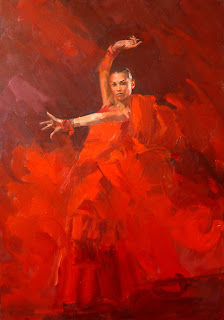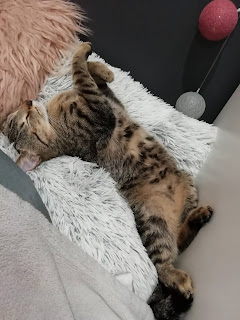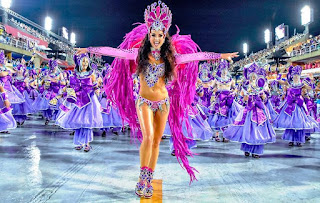It's Flamenco! 💃
With today's post we will return to Spanish culture again. Everyone has heard about Flamenco and maybe even knows something more about it. Considered to be widely as a fiery and sensual passionate national dance of Spain, equally strongly associated with this country as the brutal and controversial bullfighting- corrida (but I will write a separate post about it).
Flamenco is a cultural phenomenon related with the folklore of Andalusian Roma, including music, singing, dancing, dress and behavior. Tradition comes from Andalusia so if you want to watch a real Flamenco dance performance, it's best to go to cities such as Seville or Granada.
According to the Andalusians, Flamenco songs are "the fruit and pride of this land" and the people who sing it draw energy and inspiration from everyday life. Initially there was only singing, no dancers or guitars. Other elements could be observed only at the beginning of the 19th century. El Planeta (Antonio Monje Rivero) is recognized as the first remembered Flamenco singer (cantador).
Dance flourished at the turn of the 18th and 19th centuries, when amateur performances replaced professional ones. They were held in the so-called singing cafes (cafés cantantes). The first such local was opened in Seville.
The music is performed primarily on the guitar and the rhythm is played by both dancing and singers clapping, hitting the open hands with boxes and with castanets. The flamenco guitar is made of cypress wood. This instrument is the most important sound accompanying sensual music, but very often also plays with the violin, cello or flute. A very significant element of this Spanish dance is also the rhythm, which is the essence of what happens with the dancer on stage.
Flamenco performers have very essencial and characteristic outfits. Women wear long skirts, corsets or flared dresses decorated with many frills. The color is also important, in general it is black with red. The scarf that they wear is usually made of silk. The fan is coordinated in color with the creation of the dancer. Hair should be pinned to the back of the head with a grafted flower. Men, on the other hand, wear a white shirt, tight black pants high waisted, often tied at the waist with a handkerchief and an embroidered vest.
The dance is performed solo, in a duo, in groups or consists of subsequent "solos" performed by individual dancers.
And... Interestingly, in 2010 Flamenco dance was inscribed on the UNESCO list of intangible cultural heritage!






Comments
Post a Comment